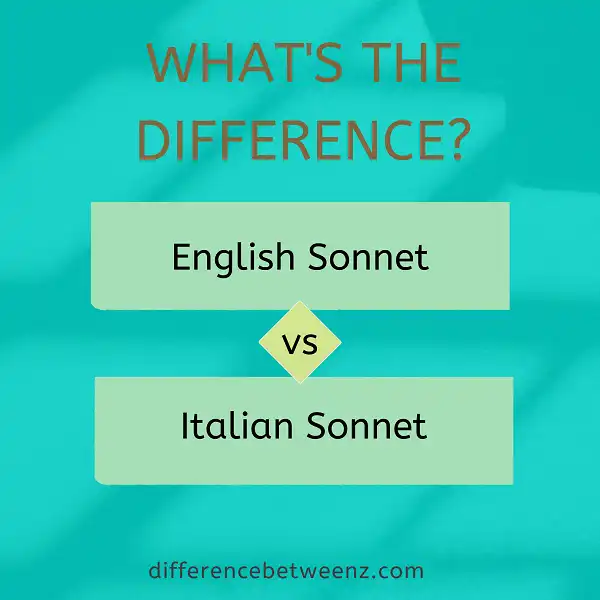A sonnet is a poetic form that has been around for centuries. Though the form is often thought of as being strictly English or Italian, in reality, there are many variations of the sonnet. In this post, we will take a closer look at the difference between an English sonnet and an Italian sonnet. We will also explore why each type of sonnet is used in certain situations. So, whether you are a poet looking to write your own sonnets or just interested in learning more about this poetic form, read on!
What is an English Sonnet?
English sonnets are a type of poetry that consists of 14 lines. The lines are divided into three quatrains and a couplet, and they typically follow an ABBA ABBA CDCD EFEF GG rhyme scheme. English sonnets often tell a story or express a poet’s thoughts on a certain subject. Many English sonnets were written during the Elizabethan era, but the form continued to be popular throughout the years. Some well-known English sonnets include “Shall I Compare Thee to a Summer’s Day” by William Shakespeare and “Death Be Not Proud” by John Donne.
What is an Italian Sonnet?
Italian sonnets are a type of poetry that originated in the Italian Renaissance. They are typically composed of fourteen lines of iambic pentameter, with a rhyme scheme of ABBA ABBA CDE CDE. Italian sonnets often have a turn, or volta, at the eighth line, where the poet changes direction or introduces a new idea. The Italian sonnet is one of the most popular forms of poetry and has been adapted by writers such as Shakespeare and John Milton. Italian sonnets typically deal with topics such as love, death, or nature.
Difference between English Sonnet and Italian Sonnet
English sonnets, also called Shakespearean sonnets, are comprised of three quatrains followed by a couplet. The English sonnet form is typically English iambic pentameter, meaning each line has ten syllables with an emphasis on every second syllable. The rhyme scheme for an English sonnet is abab cdcd efef gg. English sonnets often deal with the topics of love, beauty, and time.
Italian sonnets, also called Petrarchan sonnets, are comprised of an octave followed by a sestet. The octave typically establishes the problem oranti-thesis while the sestet resolves the problem or offers a synthesis. The Italian sonnet form is iambic pentameter like the English sonnet; however, the rhyme scheme is different. The rhyme scheme for an Italian sonnet is abbaabba cdecde or abbaabba cdcdcd. Many Italian sonnets are about the speaker’s deep love for an unattainable object of their affections.
Conclusion
Although the sonnet form has been around for centuries and there are many variations, the English sonnet and Italian sonnet are two of the most popular. In this blog post, we’ve explored the differences between these two types of sonnets. We hope you’ve found this information helpful and that it will inspire you to try writing your own sonnets in both English and Italian!


